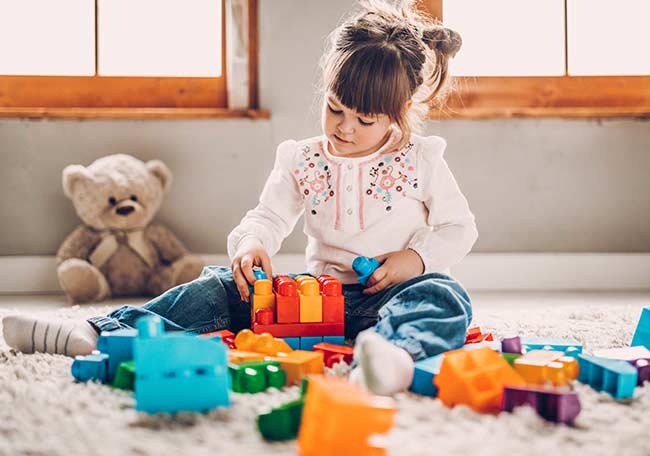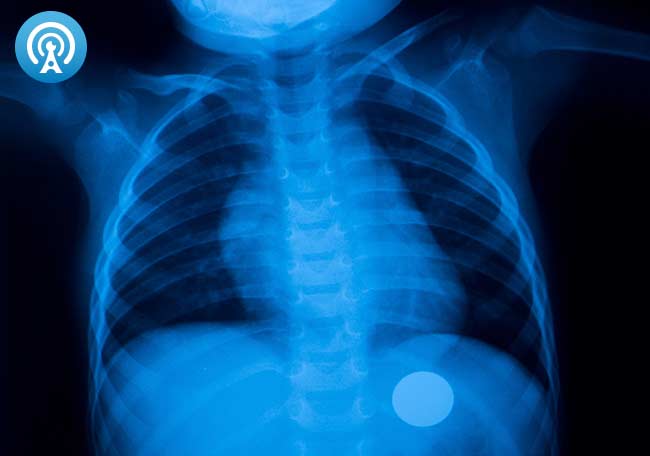Selección de juguetes para niños en la era digital

1.Goldstein J. Play in Children’s Development, Health and Well-Being. Brussels, Belgium: Toy Industries of Europe; 2012. Available at: www.ornes. nl/ wp- content/ uploads/ 2010/ 08/Play- in- children- s- development- healthand-well- being- feb- 2012. pdf. Accessed February 13, 2018
2. Levin DE, Rosenquest B. The increasing role of electronic toys in the lives of infants and toddlers: should we be concerned? Contemporary Issues in Early Childhood. 2001;2(2):242–47
3. Greenspan SI. Levels of infantcaregiver interactions and the DIR model: implications for the development of signal affects, the regulation of mood and behavior, the formation of a sense of self, the creation of internal representation, and the construction of defenses and character structure. J Infant Child Adolesc Psychother. 2007;6(3): 174–210
4. Milteer RM, Ginsburg KR; Council on Communications and Media; Committee on sychosocial Aspects of Child and Family Health. The importance of play in promoting healthy child development and maintaining strong parent-child bond: focus on children in poverty. pediatrics. 2012;129(1). Available at: www. pediatrics. org/ cgi/ content/ full/129/ 1/ e204
5. Clifford S. Go directly, digitally to jail? Classic toys learn new clicks. The New York Times. February 25, 2012. Available at https:// www. livemint. com/Industry/ tfpaBedcGvvWtXSbS CgHVI/Go- directly- digitally- to- jail- classictoys-learn- new- click. html. Accessed November 26, 2018
6. Christakis DA, Gilkerson J, Richards JA, et al. Audible television and decreased adult words, infant vocalizations, and conversational turns: a populationbased study. Arch Pediatr Adolesc Med. 2009;163(6):554–558
7. Zimmerman FJ, Christakis DA. Children’s television viewing and cognitive outcomes: a longitudinal analysis of national data. Arch Pediatr Adolesc Med. 2005;159(7): 619–625
8. Sosa AV. Association of the type of toy used during play with the quantity and quality of parent-infant communication. JAMA Pediatr. 2016;170(2):132–137
9. Parish-Morris J, Mahajan N, Hirsh-Pasek K, Golinkoff RM, Collins MF. Once upon a time: parent–child dialogue and storybook reading in the electronic era. Mind Brain Educ. 2013;7(3):200–211
10. Zosh JM, Verdine BN, Filipowicz A, Golinkoff RM, Hirsh-Pasek K, Newcombe NS. Talking shape: parental language with electronic versus traditional shape sorters. Mind Brain Educ. 2015;9(3):136–144
11. Common Sense Media. Zero to Eight: Children’s Media Use in America 2013. San Francisco, CA: Common Sense Media; 2013. Available at: www. commonsensemedia. org/ research/zero- to- eight- childrens- media- use- inamerica-2013. Accessed February 13, 2018
12. Council on Communications and Media. Children, adolescents, and the media. Pediatrics. 2013;132(5):958–961 13. Brown A; Council on Communications and Media. Media use by children younger than 2 years. Pediatrics. 2011;128(5):1040–1045
14. High PC; American Academy of Pediatrics; Committee on Early Childhood, Adoption, and Dependent Care; Council on School Health. School readiness. Pediatrics. 2008;121(4). Available at: www. pediatrics. org/ cgi/content/ full/ 121/ 4/ e1008
15. Garner AS, Shonkoff JP; Committee on Psychosocial Aspects of Child and Family Health; Committee on Early Childhood, Adoption, and Dependent Care; Section on Developmental and Behavioral Pediatrics. Early childhood adversity, toxic stress, and the role of the pediatrician: translating developmental science into lifelong health. Pediatrics. 2012;129(1). Available at: www. pediatrics. org/ cgi/content/ full/ 129/ 1/ e224
16. Shonkoff JP, Garner AS; Committee on Psychosocial Aspects of Child and Family Health; Committee on Early Childhood, Adoption, and Dependent Care; Section on Developmental and Behavioral Pediatrics. The lifelong effects of early childhood adversity and toxic stress. Pediatrics. 2012;129(1). Available at: www. pediatrics. org/ cgi/content/ full/ 129/ 1/ e232
17. Gardner HG; American Academy of Pediatrics Committee on Injury, Violence, and Poison Prevention. Officebased counseling for unintentional injury prevention. Pediatrics. 2007;119(1):202–206
18. Karr C. Addressing environmental contaminants in pediatric practice.
Pediatr Rev. 2011;32(5):190–200; quiz 200 19. Fisher K, Hirsh-Pasek K, Golinkoff RM, Singer DG, Berk L. Playing around in school: implications for learning and educational policy. In: Nathan P, Pellegrini AD, eds. The Oxford Handbook of the Development of Play. Oxford, UK: Oxford University Press; 2010
20. Fisher KR, Hirsh-Pasek K, Golinkoff RM, Gryfe SG. Conceptual split? Parents’ and experts’ perceptions of play in the 21st century. J Appl Dev Psychol.
2008;29(4):305–316
21. Hirsh-Pasek K, Zosh JM, Golinkoff RM, Gray JH, Robb MB, Kaufman J. Putting education in “educational” apps: lessons from the science of learning. Psychol Sci Public Interest. 2015;16(1):3–34
22. Schore AN. Effects of a secure attachment relationship on right brain development, affect regulation, and infant mental health. Infant Ment Health J. 2001;22(1–2):7–66
23. Dreyer BP, Mendelsohn AL, Tamis-LeMonda CS. StimQ cognitive home environment. Available at: www. med. nyu. edu/ pediatrics/ developmental/research/ belle- project/ stimq- cognitivehome-environment. Accessed February 14, 2018
24. Klin A, Jones W, Schultz R, Volkmar F. The enactive mind, or from actions to cognition: lessons from autism. Philos Trans R Soc Lond B Biol Sci. 2003;358(1430):345–360
25. Zero to Three. Early development & well-being. Available at: www.zerotothree. org/ child- development/ Accessed February 14, 2018
26. Weisleder A, Cates CB, Dreyer BP, et al. Promotion of positive parenting and prevention of
socioemotional disparities. Pediatrics. 2016;137(2):e20153239
27. Weisberg DS, Hirsh-Pasek K, Golinkoff RM. Guided play: where curricular goals meet a playful pedagogy. Mind Brain Educ. 2013;7(2):104–112
28. Ferrara K, Hirsh-Pasek K, Newcombe NS, Golinkoff RM, Lam WS. Block talk: spatial language during block play. Mind Brain Educ. 2011;5(3):143–151
29. Mendelsohn A, Huberman HS, Berkule SB, Brockmeyer CA, Morrow LM, Dreyer BP. Primary care strategies for promoting parent-child interactions and school readiness in at-risk
families: the Bellevue project for early language, literacy, and education success. Arch Pediatr Adolesc Med. 2011;165(1):33–41
30. Weisberg DS, Hirsh-Pasek K, Golinkoff RM, Kittredge AK, Klahr D. Guided play: principles and practices. Curr Dir Psychol Sci. 2016;25(3):177–182
31. Hirsh-Pasek K, Golinkoff R. Kathy Hirsh-Pasek and Roberta Michnick Golinkoff: how and how much we talk to children matters. The Dallas Morning News. June 12, 2015. Available
at: www. dallasnews. com/ opinion/latest- columns/ 20150612- kathy- hirshpasek-and- roberta- michnick- golinkoffhow-and- how- much- we- talk- to- childrenmatters. ece. Accessed February 14, 2018
32. Shifrin D, Brown A, Hill D, Jana L, Flinn SK. Growing Up Digital: Media Research Symposium. Elk Grove Village, IL: American Academy of Pediatrics; 2015. Available at: https://
www. aap. org/ en- us/ Documents/digital_ media_ symposium_proceedings. pdf. Accessed February 14, 2018
33. Patrizia M, Claudio M, Leonardo G, Alessandro P. A robotic toy for children with special needs: from requirements to design. In: 2009 Institute of Electronical and Electronics Engineers
Comentarios
Para ver los comentarios de sus colegas o para expresar su opinión debe ingresar con su cuenta de IntraMed.







